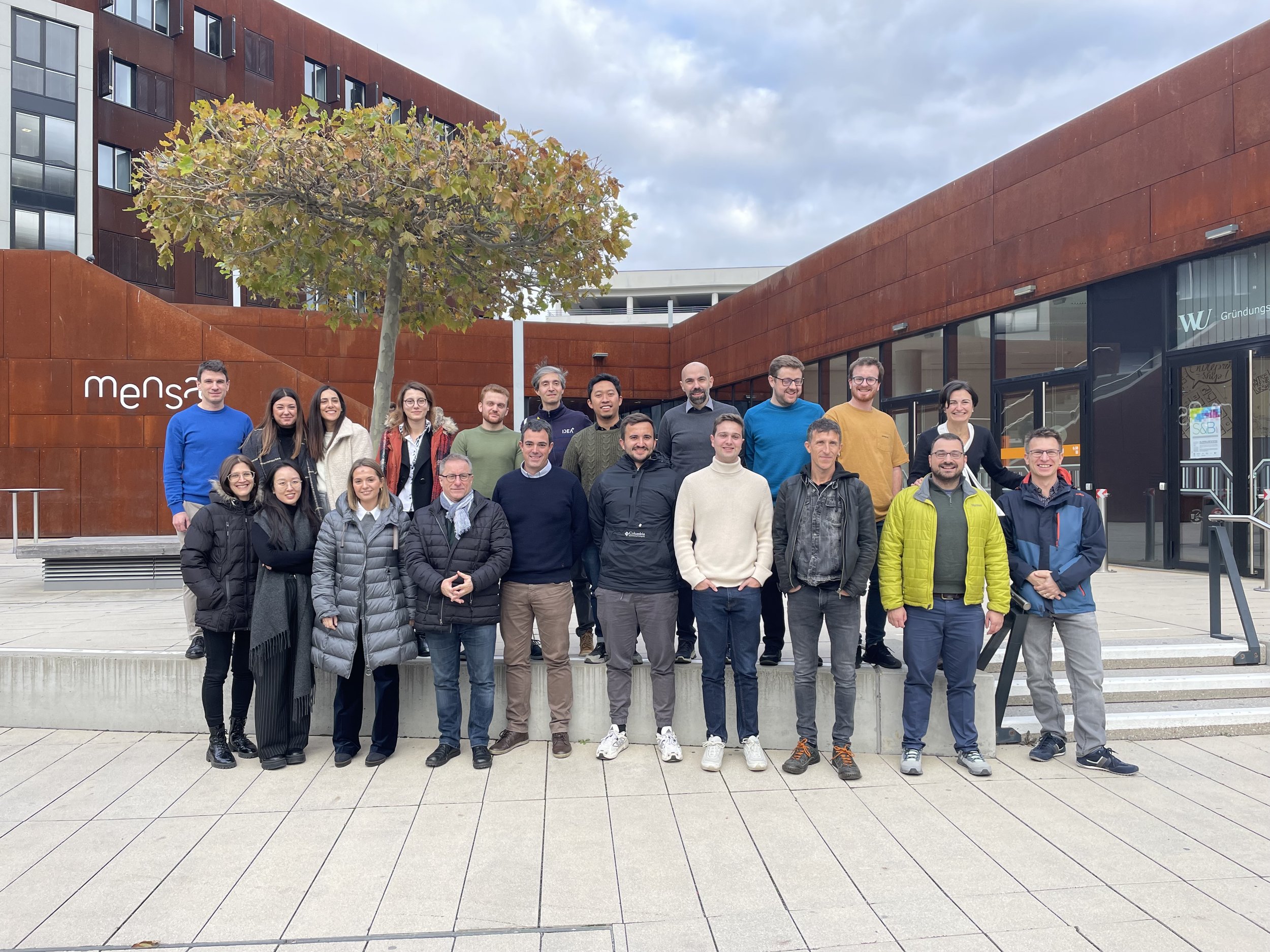The TEAMING.AI project reaches a successful conclusion
Authors: Maria Lentoudi, Ioannis Batas
26th September 2024
The TEAMING.AI project has officially wrapped up its activities, with a Final Review meeting held earlier this summer in Valencia, at the premises of Industrias Alegre. This meeting marked the culmination of 3.5 years of dedicated effort, showcasing the remarkable outcomes of this collaborative project.
Comprising a consortium of 15 partners from 8 countries, TEAMING.AI entered into force in January 2021 with the goal of increasing the sustainability of EU production with the help of Artificial Intelligence. The project has since yielded remarkable results, including more than 23 open-access publications.
Project overview
TEAMING.AI project’s aim was to make breakthroughs in smart manufacturing by introducing greater customisation and personalisation of products and services in AI technologies. Through a new human and AI teaming framework, the aim of our consortium was to optimise manufacturing processes, maximising the strengths of both the human and AI elements, while maintaining and re-examining safety and ethical compliance guidelines.
This was achieved through the development of an innovative operational framework, designed to cope with the heterogeneity of data types and the uncertainty and dynamic changes in the context of human-AI interaction with update dynamics more instantly than with pre-existing technologies.
Our CORE team led on the Dissemination and Exploitation Work Package, being involved in various tasks within the project framework to expand TEAMING.AI’s impact. More specifically, we led the project’s strategic management and replicability, as well as leading the dissemination and communication strategy.
Strategic Management & Replicability of TEAMING.AI
The CORE innovation team was responsible for the strategic management of the consortium, identifying Key Exploitable Results of the project and carrying out market analysis. Our work for this part of the project included:
Identifying Market Barriers: Our team conducted a market barriers analysis, based on input provided through a custom questionnaire. The project’s end users were surveyed, and the survey was also circulated to the ICT-38 2020 projects, increasing our end user sample. After completing the survey, we identified mitigation strategies for the barriers discussed.
Pains & Gains: We identified the most significant pains our end users face based on a unique research plan. The results of this part of our research were highly impactful, being included in Chapter 23 of the “Artificial Intelligence in Manufacturing” open access book. You can find out more here.
Value Propositions: Our team identified the value propositions offered throughout the project, through interactive workshops with our partners to help us align the identified jobs, pains, and gains with the Teaming.AI Engine result.
PESTLE Analysis: A PESTLE analysis was performed to describe Political, Economic, Social, Technological, Legal and Environmental factors that are related to Teaming.AI. Results show strong political presence to enable further scale-up activities of the project’s results. The uncertain economic conditions may influence investment decisions. The social factors indicate the need for more efficient activities and upskilling. The technologies are emerging and considered enablers according to Gartner. Finally, from an environmental point of view, results have remained a little stagnant according to the IPCC.
Market Replication & Analysis: As a final task, our team worked on Market Replication. The technology providers relevant to Teaming.AI were considered a possible segment for replication besides the project’s end users. A workshop was held with the project’s technology providers to determine requirements to address these segments.
Dissemination and Communication Activities
When it comes to dissemination and communication, the evaluation revealed a strongly positive outcome for our team’s strategy. CORE worked hand-in-hand with the entire consortium to maximize the project's impact and ensure the project’s objectives were communicated effectively to relevant audiences and stakeholders.
The project’s official website acted as its main communication hub, supported by a strong presence on social media platforms, the creation of various communication materials, including 11 videos throughout the duration of the project, the publication of 33 media articles, the release of 10 dedicated newsletter editions, and 11 press releases. These efforts were aimed at increasing the project’s visibility and public engagement.
TEAMING.AI consortium also produced 28 scientific peer-reviewed publications in top-ranked journals or conferences, attended 43 events delivering 38 presentations, promoted TEAMING.AI through 3 exhibit booths at key industry events, and organised one final conference. TEAMING.AI also joined the AI4MANUFACTURING Cluster and participated in 5 cluster workshops alongside 13 other H2020 and Horizon EU research projects to expand its impact.
A recording of the final workshop is available here for viewing on YouTube. Additionally, 10 more short videos introducing the TEAMING.AI concept and summarizing its research activities are accessible via the project’s YouTube channel.
The project’s website, designed and maintained by CORE, will continue as a central hub for useful information and resources. Visitors can learn more about important research activities performed and results through press-releases, newsletters, open-access scientific papers and public deliverables that can be found on the website.
The project has also shaped significant online communities, with more than 1.300 followers on LinkedIn and 900 on X.
The dissemination and communication activities have played a crucial role in ensuring that the TEAMING.AI project’s activities and results were effectively shared with both scientific and industry communities, as well as the general public.





